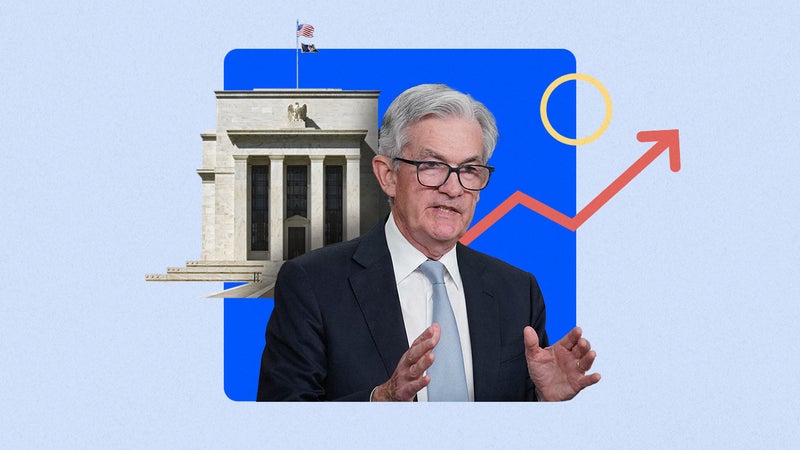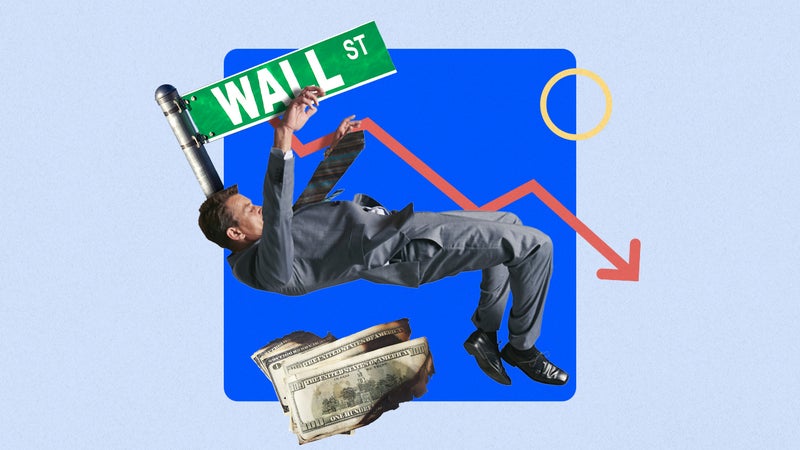Survey: Higher inflation could persist through at least 2024

The Bankrate promise
At Bankrate we strive to help you make smarter financial decisions. While we adhere to strict , this post may contain references to products from our partners. Here's an explanation for .
Consumers have been dealing with challenging levels of inflation for two years now — and their wallets could keep taking a hit.
Bankrate’s second-quarter Economic Indicator poll finds that economists are split on whether inflation will settle back in at the Fed’s preferred level of 2 percent by the end of 2024 (39 percent) or the end of 2025 (39 percent). A smaller share (11 percent) say inflation may not settle into the U.S. central bank’s target until 2026 or later, and no economist in Bankrate’s survey expects inflation to hit 2 percent by the end of this year. Another 11 percent didn’t provide a forecast.
Inflation has majorly improved since peaking at 9.1 percent in June 2022, but Americans’ budgets will keep feeling the squeeze as long as price pressures remain hot. Difficult-to-defeat inflation also keeps the Fed on edge to continue raising interest rates, and the outlook for the Fed lowering rates is contingent on when inflation settles back into U.S. central bankers’ target.
Neither consumers nor the Federal Reserve are popping the champagne just yet. Americans have put the worst of inflation behind, but the war hasn’t yet been won.— Mark Hamrick, Bankrate senior economic analyst
Key insights on inflation from Bankrate’s Economic Indicator survey
- Economists are split on when inflation will hit the Fed’s 2 percent target.
- Roughly 2 in 5 (39 percent) each are predicting inflation will reach levels that the Fed views as optimum either by the end of 2024 or the end of 2025.
- No economists see inflation hitting 2 percent by the end of 2023.
- Price increases have slowed substantially since peaking at 9.1 percent in June 2022, but inflation is still hot on essential categories, including services, child care and housing.
The Fed’s inflation battle isn’t over yet
Economists in Bankrate’s survey may be even more upbeat than Fed officials. Policymakers see inflation holding above 2 percent through at least 2025, the Fed’s updated projections from June show. Even so, the 2.1 percent projected level for the year would mean prices are rising at a level much more in line with the Fed’s target than at any point since early 2021. When excluding food and energy, inflation is expected to be a slightly hotter 2.2 percent by the end of 2025, the Fed’s estimates also show.
The Fed’s forecasts, however, are judged by the Fed’s preferred gauge of inflation from the Department of Commerce, rather than the Department of Labor’s consumer price index (CPI). The latter inflation measure tends to rise at a slightly faster pace over time, even if they do track the same trends.
Part of the reason why inflation has been so stubborn is because its sources have changed. The supply shocks that contributed to rapid food and energy inflation have majorly improved, but Americans are now dealing with expensive services costs, as well as major increases in rent, housing, health care, airfares and other transportation.
The Fed thinks those measures won’t improve without a broader economic slowdown, including in the labor market, where ongoing labor shortages have pressured employers to hike wages.
“While inflation has fallen quickly in recent months, core inflation remains tenacious and will not fall easily,” said Robert Frick, corporate economist at the Navy Federal Credit Union. “Shelter costs will be stubborn, and consumer demand will keep some services prices higher.”
A sign that the labor market is still tight, wage and salary costs at private companies are up about 5.1 percent in the first quarter of 2023 from a year ago, down from a record high of 5.7 percent in the second quarter of 2022 but still at elevated levels, Labor Department data shows.
Job openings have been falling but are still at record levels, with some of the biggest openings concentrated in health care and social assistance, as well as accommodation and food services.
It’s unclear, however, how much longer that may last. Economists in Bankrate’s survey expect that a slowdown is on the horizon. Employers are expected to add just 29,000 new positions each month on average over the next 12 months — down from the previous 12-month average pace of 316,000.
Real-time housing indicators also show that rent and home prices aren’t rising at a pace as quickly as they were when consumers emerged from lockdowns, but measures of inflation in those categories tend to act with a lag. Inflation could fall even more once those fading price pressures show up, but home prices have accelerated again for three months in a row. While falling inflation is expected, economists point out that the risks of hotter inflation outweigh the odds of lower-than-expected inflation.
“Goods inflation has been declining, and everyone is confident that housing inflation will follow suit once the lag catches up,” said Odeta Kushi, deputy chief economist at First American Financial Corporation. “However, recent wage growth, employment, and inflation estimates suggest that services ex-shelter is still running hot. A less than white-hot labor market and slowing service sector wage gains are key to getting the Federal Reserve to take its foot off the gas.”
Hear from the experts
Inflation remains sticky, especially for core services excluding housing. Home prices and rents have cooled and will begin to act as a disinflationary force on the core number, but risks are to the upside. Home prices are already reaccelerating in some parts of the country, and there is still not enough housing supply for the millennials who are aging into their prime home buying years.
— Yelena Maleyev, senior economistKPMG
We are now at the point where wringing the last few percentages of inflationary pressures is more difficult. It will take the prolonged effects of the likely coming recession and time for the inflation rate to fall back too close to 2 percent.
— Bernard Markstein, president and chief economistMarkstein Advisors
The Fed has let inflation fester by waiting so long to hike rates. It is entrenched, it is embedded in wage demands, and the real wage has eroded, meaning labor will continue to be aggressive in future labor negotiations. Risks clearly are for more inflation longer rather than for less, sooner.
— Robert A. Brusca, chief economistFact and Opinion Economics
Inflation is coming down, but slowly. Inflation is expected to gradually come down to the Fed’s target as slower moving components such as shelter and services see additional disinflation over the next two years as the economy slows.
— Mike Fratantoni, chief economistMortgage Bankers Association
-
The Second-Quarter 2023 Bankrate Economic Indicator Survey of economists was conducted June 26-July 5. Survey requests were emailed to economists nationwide, and responses were submitted voluntarily online. Responding were: Odeta Kushi, deputy chief economist, First American Financial Corporation; Tuan Nguyen, economist, RSM US; Yelena Maleyev, economist, KPMG; Scott Anderson, chief economist, Bank of the West; Nayantara Hensel, Ph.D., chief economist, Seaborne Defense; Joel L. Naroff, Naroff Economics; Mike Fratantoni, chief economist, Mortgage Bankers Association; Robert Frick, corporate economist, Navy Federal Credit Union; John E. Silvia, CEO and founder, Dynamic Economic Strategy; Dante DeAntonio, director of economic research, Moody’s Analytics; Bernard Markstein, president and chief economist, Markstein Advisors; Bernard Baumohl, chief global economist, the Economic Outlook Group; Lawrence Yun, chief economist, National Association of Realtors; Robert Brusca, chief economist, Fact and Opinion Economics; Bill Dunkelberg, chief economist, NFIB; Gregory Daco, chief economist, EY; Lindsey Piegza, Ph.D., chief economist, Stifel; Eugenio J. Alemán, Ph.D., chief economist, Raymond James Financial; Patrick Horan, research fellow, Mercatus Center at George Mason University; Abbey Omodunbi senior economist, PNC Financial Services; Ryan Sweet, chief U.S. economist, Oxford Economics; and Mike Englund, chief economist, Action Economics.


